
Original illustration by Sonaksha Iyengar.
GenderIT and Locnet invited women who work in Community Networks to share their experiences in the times of COVID-19 and their reflections on what these times have revealed around centering meaningful communication in their physical and digital communities. This is the third of the stories that got to be told about the acts of care in communication technologies under the pandemic. Read the first part here and the second part here.
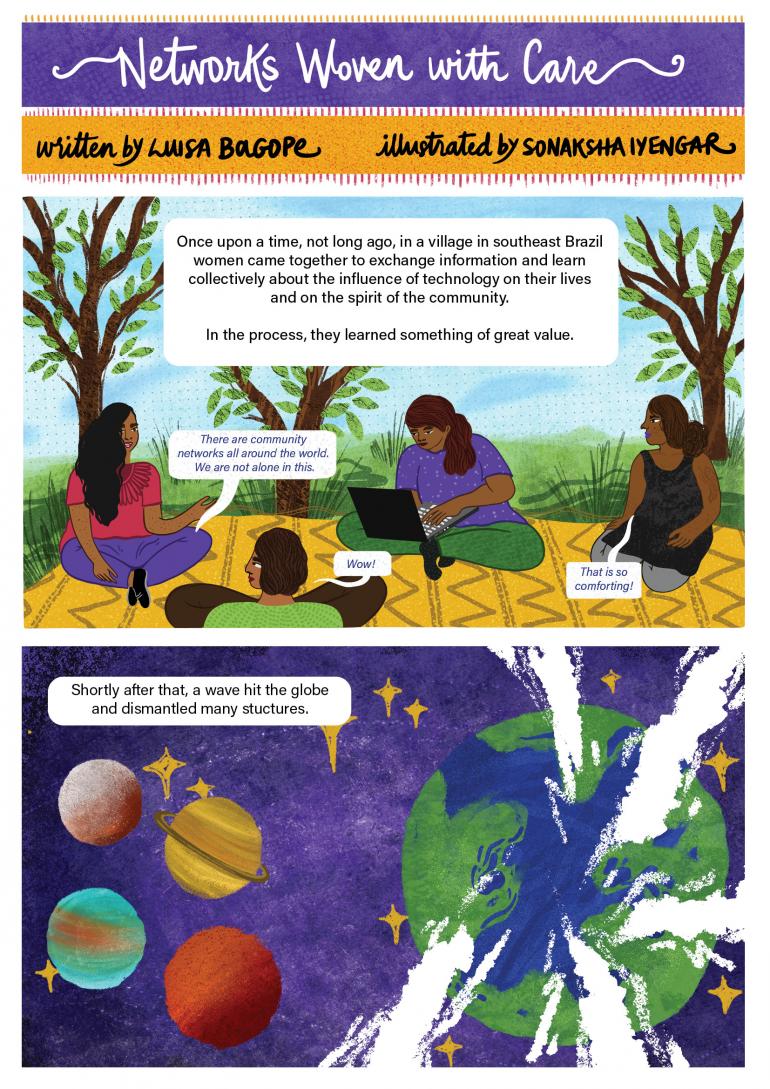
Frame 1.
Image description: three women are sitting on the grass, talking; they are on a yellow carpet; one of them is using a laptop.
Text: Once upon a time, not long ago, in a village in southeast Brazil, women came together to exchange information and learn collectively about the influence of technology on their lives and on the spirit of the community. In the process, they learned something of great value.
Dialogue: Person 1: There are community networks all around the world. We are not alone in this. Person 2: Wow! Person 3: That is so comforting!
Frame 2.
Image description: a view of Earth from the space; white streams hit the planet. Text: Shortly after that, a wave hit the globe and dismantled many structures.
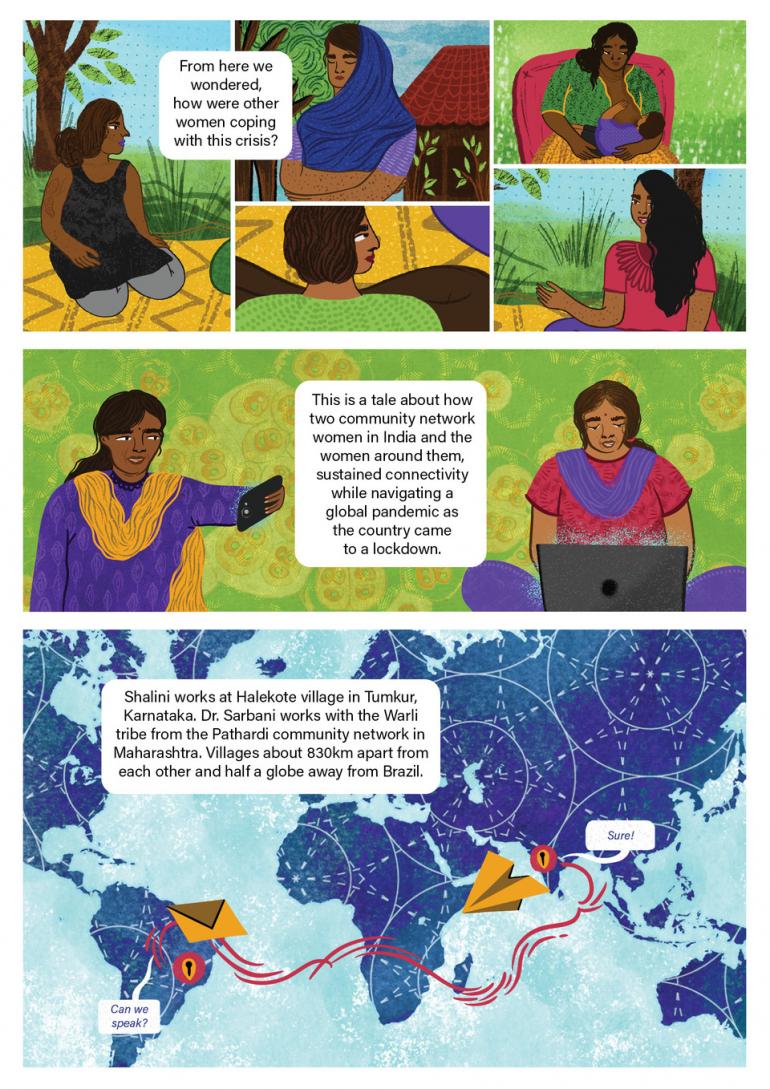
Frame 1.
Image description: close-up of each woman while they are talking each other about the situation.
Text: From here we wondered, how were other women coping with this crisis?
Frame 2.
Image description: close-up of two of the women; one of the women takes a selfie and the other uses a laptop.
Text: This is a tale about how two community network women in India and the women around them sustained connectivity while navigating a global pandemic as the country came to a lockdown.
Frame 3
Image description: a message travelling across a world map.
Dialogue: Mail envelop: Can we speak? Telegram message: Sure
Text: Shalini works in Halekote village in Tumkur, Karnataka. Dr. Sarbani works with the Warli tribe from the Pathardi community network in Maharashtra. Villages about 830 km apart from each other and half a globe away from Brazil.
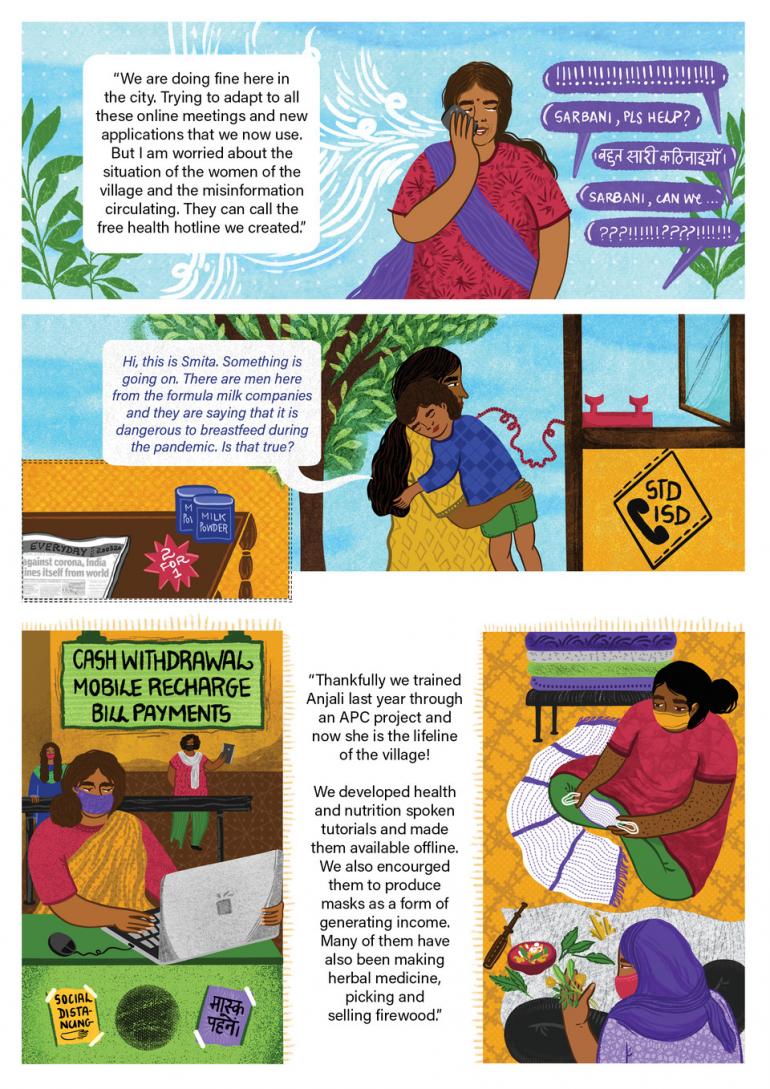
Frame 1.
Image description: a woman making an emergency call on her mobile phone.
Dialogue of Dr. Sarbani: “We are doing fine here in the city. Trying to adapt to all these online meetings and new applications we now use. But I am worried about the situation of the women of the village and the misinformation circulating. They can call the free health hotline we created.”
Frame 2.
Image description: Smita calls from pay phone with child in her arms.
Dialogue of Smita: “Hi, this is Smita. Something is going on. There are men here from the formula milk companies and they are saying that it is dangerous to breastfeed during the pandemic. Is that true?”
Frame 3.
Image description: Image 1, a woman with a mask using a laptop to help others with mobile recharges and cash withdrawal. Image 2: two women sitting together wearing masks; one of them making a mask; the other, making medicines with herbs.
Dialogue of Dr. Sarbani: “Thankfully we trained Anjali last year through an APC project and now she is the lifeline of the village! We developed health and nutrition spoken tutorials available offline. We also encouraged them to produce masks as a form of generating income. Many of them have also been making herbal medicine, picking and selling firewood.”
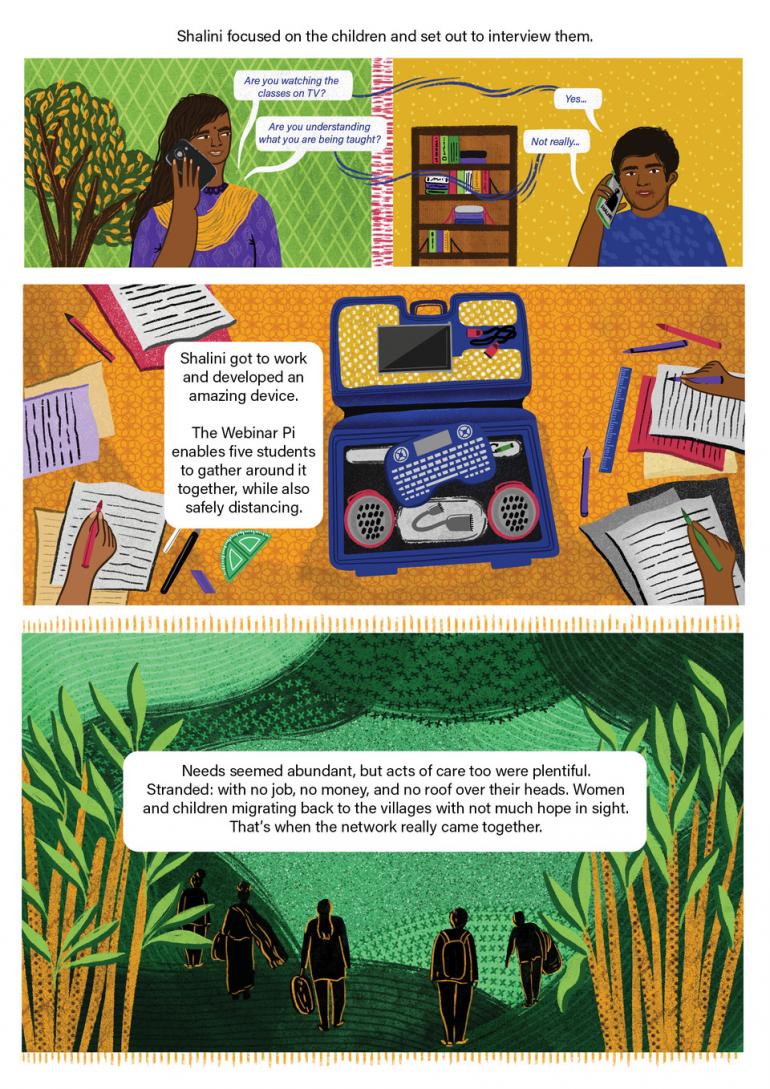
Frame 1.
Text: Shalini focused on the children and set out to interview them.
Image description: child speaks on the phone with Shalini.
Dialogue: Shalini: Are you watching the classes on TV? Child: Yes... Shalini: Are you understanding what you are being taught? Child: Not really.
Frame 2.
Image description: students work around a desk with papers, pencils and a computer kit with a small screen, keyboard and speakers.
Text: Shalini got to work and developed an amazing device. The Webinar Pi enables five students to gather around it, while also safely distancing.
Frame 3.
Image description: five migrants walking in the country.
Text: Needs seemed abundant, but acts of care too were plentiful. Stranded: with no job, no money, and no roof over their heads. Women and children migrating back to the villages with not much hope in sight. That’s when the network really came together.
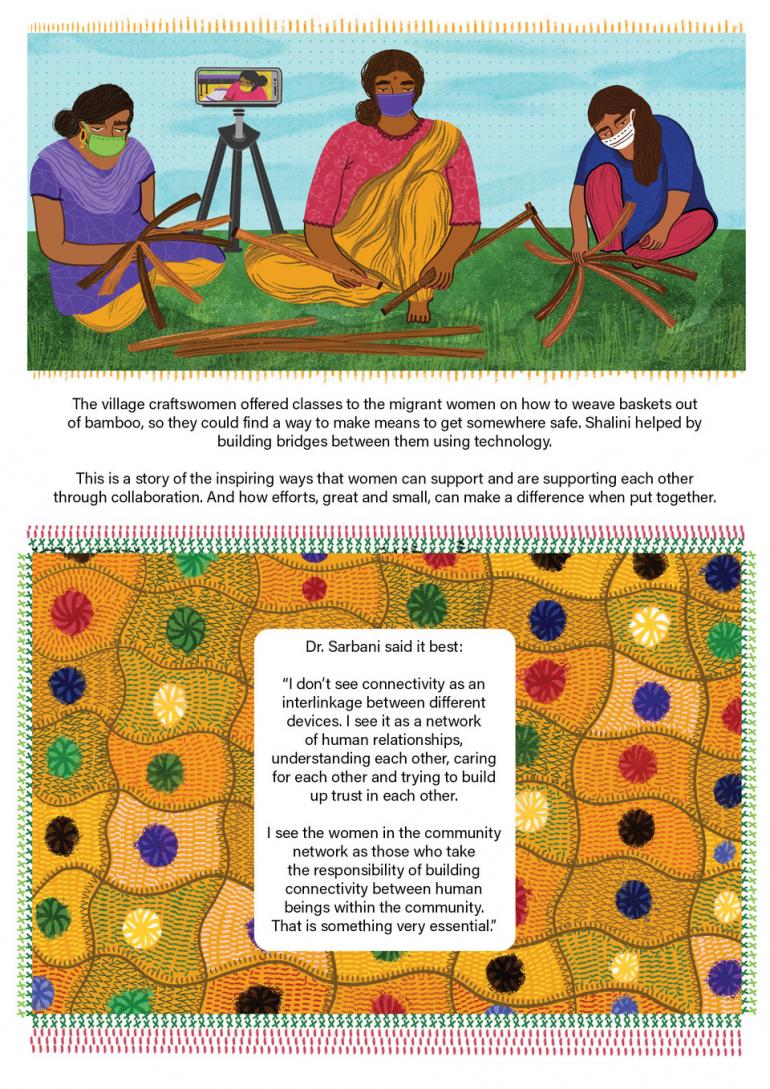
Frame 1.
Image description: three migrant women weaving baskets; they are connected to a video call with Shalini.
Text: The village craftswomen offered classes to the migrant women on how to weave baskets out of bamboo, so they could find a way to make means to get somewhere safe. Shalini helped by building bridges between them using technology.
Frame 2.
Image: a yellow crochet blanket as background for the final text.
Text: This is a story of the inspiring ways that women can support and are supporting each other through collaboration. And how efforts, great and small, can make a difference when put together. Dr. Sarbani said it best: “I don’t see connectivity as an interlinkage between different devices. I see it as a network of human relationships, understanding each other, caring for each other, trying to build up trust in each other. I see the women in the community network as those who take the responsibility of building connectivity between human beings within the community. That is something very essential.”
See the webcomic as flip-book
- 2937 views







Add new comment